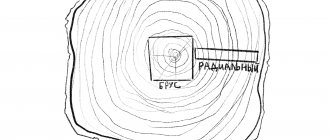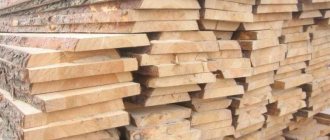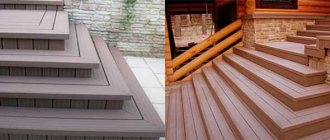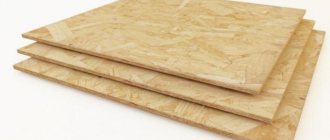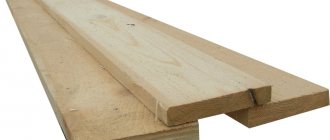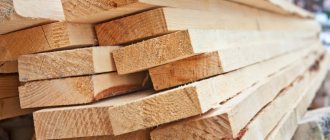03.01.2022
Cleaning and Cleaning
0
9 min
200
Hello, friends!
A cutting board is an essential kitchen element that comes in handy when preparing your favorite dishes for family and friends.
And depending on your menu, you may even have multiple cutting boards in different materials to get the job done.
Wood and plastic are the two most popular types of cutting boards and are also considered the safest.
No matter what material you have, make sure you take the time to clean it properly to keep any unwanted bacteria or viruses away.
Thanks to their porous structure, cutting boards can be the perfect place to fight off those pesky gut bugs like E. coli and salmonella that can get into your food while you're cooking it.
To make sure this kitchen tool is clean and free of germs and viruses, follow these steps to clean cutting boards.
Washing symbols on clothing care label
How to clean wooden cutting boards?
Set aside a few lemons for your next grocery run.
When combined with two pantry staples (salt and baking soda), citrus fruits have powerful cleansing powers that go beyond the surface.
Lemons make an excellent cleaning agent due to the antibacterial properties of their acidic juice, and the abrasive properties of salt are good for cleaning cutting boards.
Baking soda is a gentle abrasive—it also has brightening properties and is a natural deodorizer, helping to remove stubborn odors from onions, garlic, and other foods.
What you will need:
- 1/4 cup coarse salt;
- 1 lemon;
- Knife;
- 1/4 cup baking soda;
- Sponge or cloth;
- Bristle brush or toothbrush.
Step 1: Place a wooden cutting board in the sink and generously sprinkle the surface of the board with coarse salt.
Step 2: Cut the lemon in half and squeeze the juice from half over the salt. Rub the board with half a lemon.
Repeat this process on the other side of the board and let the cutting board sit for five minutes before rinsing off the lemon and salt.
Step 3: Wash both sides of the cutting board with warm water and a sponge or cloth.
Step 4: For tough stains, spray the cutting board with baking soda and scrub the board with a brush or toothbrush. Repeat on the other side.
Step 5: Rinse the board again with a sponge and warm water, then dry thoroughly with a clean towel.
Step 6: If you have an end-grain cutting board, be sure to oil it once it's completely dry so that your board can activate its "self-healing" properties and restore its fibers to their natural state.
Edged cutting boards should also be oiled regularly.
Wooden cutting boards, the cheapest available and prone to warping, do not require oiling for maintenance.
How to clean a wooden board with soap and water?
- Washing: Wash the board by hand immediately after use with dish soap and water;
- Drying: Pat the board dry with a paper towel or clean kitchen towel immediately after cleaning.
How to clean a wooden cutting board with vinegar?
- Pour: Open your vinegar and pour it onto the surface of your board;
- Wipe: After you have poured out the vinegar, wipe with a clean, damp cloth;
- Drying: Allow the board to dry after cleaning.
It is not recommended to use vinegar on cutting boards for raw meat, fish or poultry.
How to Clean a Wooden Board Using Bleach
- Mix the bleach solution: Prepare a mixture of 1 teaspoon of bleach per 1 liter of water;
- Apply the solution: Pour the mixture onto the board and rinse thoroughly with hot water.
Because moisture absorption can cause the wood to split and warp and allow bacteria to grow rapidly, never submerge a wooden cutting board under water or put it in the dishwasher.
How to properly care for wooden boards?
Seasoning your board can extend its life and prevent warping and cracking.
Depending on how often you use your wood cutting board, you can season it weekly, biweekly, or monthly.
Here's how to season a wooden cutting board:
- Wipe the surface of the dry board with food-grade mineral oil or beeswax;
- Let the oil sit for several hours;
- Wipe off any excess oil or beeswax with a dry cloth.
Never use vegetable oil or olive oil to season your cutting board because they can go rancid over time.
Diseases
Not only the mistakes of novice gardeners, but also infectious diseases can provoke severe blackening of the leaves.
Bacterial burn
This is a rather negative process that is poorly treated and negatively affects the apple tree, leading it to a serious condition. This disease can affect the entire garden if an infected seedling was previously purchased and planted on its territory.
At the initial stage, the pathology manifests itself as black dots on the leaves. They appear in the spring and coincide with the flowering period. Also, in some cases, they may appear in the fall. Such spots quickly spread throughout the tree, the leaves begin to turn black and dry out. At the same time, they do not fall off, but the apple tree drops all the fruits, and therefore urgent measures are required for treatment so that the tree does not die completely.
Treatment is carried out by cutting out and destroying the affected fruits and leaves. Also, when pruning, it is necessary to capture 5 cm of healthy wood. All sections are disinfected with copper-based solutions. Often, low concentrations of copper sulfate are used for this. Then such a place is covered with garden lubricant
It is also important to spray trees. This is done in the spring using the following preparations:
- "Kuprostat";
- "Oxychom";
- "Home";
- Bordeaux mixture.
Scab
This pathology can affect both fruits and foliage. It appears in the first stages as brown spots on the leaves. Then they turn black and dry out and fall off. A tree affected by this disease can live quite a long time. The fungus is a parasite and feeds on the life-giving elements of the plant. In this case, the tree itself will grow poorly, and the crop will rot on the branches.
Pathology treatment is carried out comprehensively, several times throughout the season.
When treating trees, it is important to uniformly spray the preparations. The last treatment is carried out in the fall, when the tree is already preparing for winter, and the first must be done in early summer
Spraying is carried out three times per season, every 10 days. It is recommended to finish it a week before the fruits begin to appear.
Ring spot
This disease belongs to viral pathologies that slow down the development of plants. As a result of the onset of the disease, the leaves become covered with a yellow coating, then turn black and increase in size. The disease can affect the entire apple tree, causing it to grow slowly.
The trunk will not develop, and the shoots will become shortened. Treatment is carried out by carrying out the necessary agricultural technology aimed at strengthening the tree’s immunity. Spraying is carried out with the following immunostimulants:
- "Zircon";
- "Epin";
- "Hello."
Black plaque
The appearance of such plaque on an apple tree may indicate that it is affected by cancer. This disease is fungal and often causes the complete death of the plant. When the leaves become covered with a black coating, it means that the disease is in its final stage.
Initially, it appears as red spots on the leaves, which then gradually spread throughout the entire leaf and turn it black. The plaque may be on the back or front side. After the plaque appears, the leaves fall off, their edges curl, which leads to the tree losing all its foliage even in summer.
Treatment of this pathology is carried out exclusively comprehensively, since it can affect not only leaves, but also branches and roots. All affected elements and areas must be cut out. The wood is also treated with antiseptics, including copper sulfate or Bordeaux mixture. The places where the branches were cut are sprayed with antimicrobial agents.
How to clean plastic cutting boards?
Plastic cutting boards are often more affordable and easier to clean, making it easy to assemble different colors or designs that can be used for different purposes.
For example, by chopping vegetables on a green cutting board and raw chicken on a yellow cutting board, you can minimize cross-contamination and keep your cooking environment as safe as possible.
Check the condition of your plastic cutting board regularly for visible signs of wear.
The more scratches and cuts a knife makes, the easier it is for microorganisms to hide and grow, and the more difficult it will be to properly clean plastic cutting boards.
What you will need:
- 1 cup baking soda;
- 1 glass of salt;
- 1 glass of water;
- Small bowl;
- Spoon;
- Bristle brush or toothbrush.
Step 1: Combine baking soda, salt and water in a small bowl, stirring until a paste forms.
Step 2: Apply the paste to one side of the board with a spoon.
Step 3: Use a bristle brush or toothbrush to clean the surface of the plastic cutting board.
Rinse with warm water, turn over and repeat.
Step 4: Rinse the board with warm water and dry with a clean cloth.
Step 5: If you have a dishwasher, you can skip steps 1-4 altogether and throw the plastic cutting board in the dishwasher to clean.
Hot water will effectively sanitize your plastic cutting board(s) without any hassle or effort.
How to clean plastic cutting boards with vinegar?
- Making the paste: Mix equal amounts of baking soda and vinegar into a paste;
- Apply to board: Once the paste is mixed, spread it over the cutting board and let it sit;
- Rinse: After five minutes, wash the board with soap and water and rinse.
How to save plastic cutting boards?
When you start to see nicks on your plastic cutting board, use a steel wool pad to remove any loose plastic particles from the board's surface, then use a belt sander to smooth the surface.
How to clean bamboo cutting boards?
Generally, bamboo cutting boards will not crack, warp, or stain as easily as wood boards due to their higher density.
They are also more resistant to cuts and knife marks than wooden alternatives, meaning they are more resistant to the growth of dangerous bacteria.
To clean a bamboo cutting board, follow these steps:
- Choose a cleaning product: You can use dish soap, white vinegar, or a bleach and water solution to clean the board;
- Add hot water: Mix your chosen cleaning product with hot water and thoroughly wipe the surface of the board;
- Drying: Pat the board dry with a paper towel or clean kitchen towel immediately after cleaning;
- Avoid getting wet: Do not soak your bamboo cutting board or put it in the dishwasher.
How to care for bamboo cutting boards?
The process of caring for a bamboo cutting board is very similar to caring for a wooden cutting board:
- Wipe the surface of the dry board with food-grade mineral oil or beeswax;
- Let the oil sit for several hours;
- Wipe off excess oil or beeswax with a dry cloth;
- Never use vegetable oil or olive oil to season your cutting board because they can go rancid over time.
But in addition to the steps above, you can also cut a lemon in half and rub it, cut side down, across the surface of the board to freshen it up between oil or beeswax treatments.
The natural acidity of lemon will help remove residue on your cutting board.
How to prepare the mixture at home
If you were unable to buy the necessary impregnation for the boards in the store, you can easily make it at home, with your own hands. The simplest recipe is:
- buy Vaseline oil at the pharmacy,
- buy beeswax in a specialized store,
- combine 4 parts butter and 1 part wax, cut into pieces,
- melt the mixture in a water bath, stirring to ensure homogeneity,
- cool the product to room temperature,
- Use for wood processing, store in the refrigerator.
It is undesirable to replace beeswax with paraffin or stearin - the latter strongly clog the pores of the wood, which seriously impairs its vapor permeability and can provoke rotting.
How to clean rubber cutting boards?
One of the benefits of a rubber cutting board is its non-porous and non-absorbent surface, which resists warping and does not retain as much bacteria as porous alternatives.
Here's how to clean a rubber cutting board:
- Scrub: Using dish soap and hot water, scrub cutting board thoroughly;
- Avoid dishwashers: Never put a rubber cutting board in the dishwasher because high temperatures can damage the materials.
How to care for rubber cutting boards?
Unlike wood and bamboo options, rubber cutting boards require little maintenance.
Just replace the board if it gets badly cut by the knives.
This will prevent the growth of bacteria in cut defects caused by long-term use.
Sandpaper
Sometimes dirt eats into the fibers so much that it is not possible to wash them using conventional means. Then sandpaper will come to the rescue.
To do this, you need to take fine-grained sandpaper and carefully sand the entire surface.
As you can see, any of these methods will help tidy up your kitchen appliances, and most importantly, without the use of harmful chemicals.
How to clean composite cutting boards?
To clean your composite cutting board, simply rinse it and place it in the dishwasher.
Composite cutting boards are made from durable polymer material, making them strong and durable.
Typically, composite boards can withstand temperatures up to 250 degrees Fahrenheit without damage.
As a result, they are ideal for cutting meat and can even be used as a pizza pan.
How to properly care for composite cutting boards?
Although composite cutting boards are more resistant to scratches and cracks than wood and plastic boards, they need to be replaced when they wear out.
Be aware of damage to the surface of the board and replace it if it produces an odor when wet.
Features of plastic and wood
For several decades now, plastic and wood have been at the top of popularity in the manufacture of cutting boards. But, as they say, every coin has two sides. So, the listed materials have both positive and negative sides. Let's dwell a little on these points.
Tree
This material has its advantages:
- ease of use;
- relatively low cost;
- environmental friendliness;
- strength.
Flaws:
- the material absorbs fruit and vegetable juice;
- rapid contamination and wear.
Plastic
The following positive aspects of this material can be highlighted:
- color variety;
- does not absorb odors;
- strength;
- ease.
Minuses:
- no antibacterial coating;
- slippery surface;
- questionable environmental friendliness.
How to clean flexible cutting boards?
When you're done using your flexible cutting board, simply rinse it with warm water and place it in the dishwasher.
Flexible cutting boards have a flexible design that allows them to easily be formed into a funnel for pouring chopped and chopped ingredients into a bowl or pan.
Flexboards are often made of plastic, which helps resist bacterial growth.
How to Maintain Flexible Cutting Boards?
Most flexible cutting boards are relatively thin, and not all options are suitable for use with exceptionally sharp blades.
If any of your cuts go through, you will need to replace the board.
Additional methods for cleaning cutting boards
While salt and lemons have strong natural cleaning properties, there are other common household products that can be used to effectively clean cutting boards.
For an extra clean when your board needs a little extra attention, try treating it with bleach, hydrogen peroxide, or vinegar.
Bleach: Mix 2 teaspoons of bleach per 2-3 liters of water. Soak the cutting board thoroughly for 2 minutes, then rinse with warm water and let it dry.
Hydrogen Peroxide: Get rid of unwanted bacteria from any cutting board by wiping it down on each side with a paper towel soaked in hydrogen peroxide.
Let the board sit for a few minutes, then rinse with warm water and dry with a clean cloth.
White Vinegar: Apply distilled white vinegar to cutting board and wipe off.
To remove odor from a cutting board, sprinkle a little baking soda on the board and then spray it with vinegar.
Let the vinegar and baking soda work their magic for 5-10 minutes (you'll see them start to bubble), then rinse the board with a rag and cold water.
FAQs
Cleaning cutting boards with bleach
Bleach can help sanitize your cutting board or remove surface stains after use.
To learn how to clean a cutting board with bleach, follow these steps:
- Mix a bleach solution: Create a bleach cleaning solution using 1 tablespoon of bleach per quart of water;
- Pouring: Once the solution is ready, pour it onto the board and let it sit;
- Rinse and Dry: Once the board has had time to sit, rinse it with water and let it air dry.
Can plastic cutting boards be put in the dishwasher?
A plastic cutting board cannot be washed in the dishwasher.
Prolonged exposure to heat and water inside the machine can cause the plastic board to change shape, making it uneven and less efficient.
Each type of cutting board has unique cleaning and maintenance needs.
Therefore, it is important to know how to handle your cutting board to avoid dangerous levels of bacteria and damage.
Use this guide as a guide when cleaning cutting boards, but if you are unsure how to handle the board, consult the board manufacturer.
How do you clean cutting boards at home?
Reveal your secrets in the comments section below, we'll thank you.
See you soon! Come in!
Average score: 0
Did you like the article? Please share this with others!
What to do about this problem
To avoid blackening of wood, you should take a more careful approach to the choice of building material, the time of its preparation, as well as the technological process. You should not cut down trees that are located near swamps and ponds. In addition, it is best to harvest timber in winter. It is during this period of time that all life processes in the tree stop. It has been scientifically proven that a tree cut down in winter best retains its thermal insulation qualities. In addition, it is guaranteed to be free of microorganisms that cause blackness and rapid rot.
If this could not be done on time, then you should turn to such unique products - wood bleaches “BioShchit-1” and “BioShchit-2”, which will help you fight the blackening of boards, lumber, logs and various timber.
Photo
: wood bleach "BioShield-2" can combat strong blackening (blackness) on lumber wood.
Photo
: Wood bleach "BioShield-1" can combat less severe blackening (blackness) on lumber, logs and timber.
- Blue fungi. Under their influence, the tree acquires a gray-blue tint. These mushrooms are capable of destroying the existing layer of varnish or paint, thereby opening up the access of moisture to the wooden material. The fungus itself will not harm the strength characteristics of the material. But its appearance indicates that the wood needs protection.
- White and black mold. These fungi can appear not only on wood, but also on other materials (stone, tiles, concrete, etc.). They act destructively on the very structure of the building and have a negative impact on people’s health. Their spores in the air settle on a person’s skin, penetrate his respiratory tract, all this leads to allergic diseases and serious problems with the respiratory system (laryngitis, bronchitis, asthma, etc. can form).
- Rotting fungus. It can be dry or wet. Wet fungus forms on damp wood material. It is often found on wood located near the ground, water pipes, or on the floor. Dry rotting fungus also forms in damp places. This fungus appears in the form of reddish spores. They penetrate deep into the wood structure and begin to destroy it.
- White, house mushroom. It grows rapidly and in a short time completely destroys the wooden building. The spores of this fungus are spread by the wind. This fungus is “tenacious” and is not easy to eliminate on already infected wood. House fungi themselves are capable of producing moisture for their own development and attacking already dry wood. That is why houses infected with this type of fungus were previously burned down, so as not to infect other healthy structures. Home mushroom is considered the most dangerous species for wooden material. It occurs primarily on softwoods, but can also develop on other materials containing cellulose. The house fungus is not capable of affecting only durable oak.
All types of fungus are dangerous to wood and human health. To prevent them from appearing in a wooden building, you need to properly organize heating, waterproof the walls and foundation, and also ensure good ventilation of the room. And for preventative purposes, it is also necessary to treat wooden material with antiseptic impregnations.
